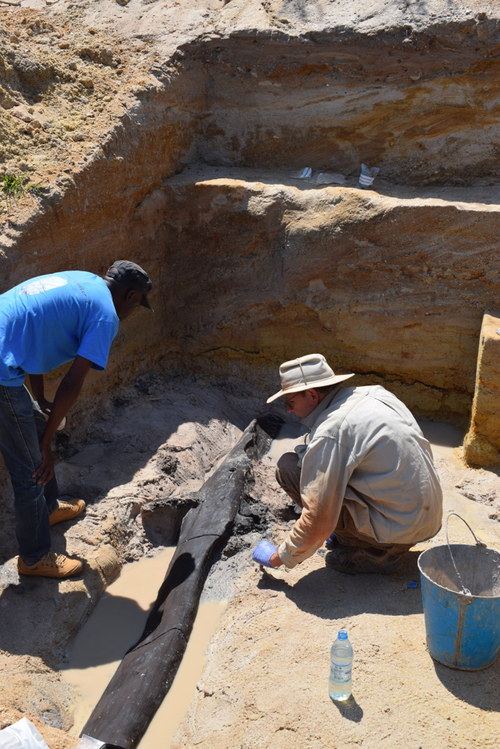Archaeologists play a crucial role in uncovering information about the past, particularly before modern times. Their discoveries have revealed the existence of dinosaurs in the past, as well as shed light on the appearance and way of life of humans who lived during that period.
Archaeological discoveries are a significant field, and a recent finding by researchers from the University of Liverpool and Aberystwyth University highlights this.
Their study suggests that humans were capable of constructing wooden structures much earlier than previously believed, with evidence indicating that this ability existed over half a million years ago. This discovery sheds new light on the development of human civilization.
The research, published in the journal Nature, made a detailed analysis of new archaeological remains found in an archaeological site of Kalambo Falls, Zambia, dating back at least 476,000 years. Apparently, their archeological remains show how the descendants of homosapeins managed to carve out wooden figures.
Based on their report, early humans utilized tools, such as stones, to construct wooden structures, which is a significant archaeological discovery dating back centuries.
However, it's unclear how the wooden structure managed to maintain its preservation for nearly half a million years. Recent research reveals that the permanently high water levels at Kalambo Falls contributed to its preservation by preventing it from rotting away.

The latest discovery is now challenging the misconception that those who lived in the Stone Age were solely nomadic. Apparently, they had a way of building their own structures that they lived in. Moreover, this new research shows that humans from the Stone Age had the tendency to build their homes near a large source of water.
New Archeological Findings Change Perception of Stone Age
Professor Larry Barham, from the University of Liverpool’s Department of Archaeology, Classics, and Egyptology, was the first person to admit that his perception of the Stone Age has changed. He is the one leading the ‘Deep Roots of Humanity’ research project.
He said, "This find has changed how I think about our early ancestors. Forget the label ‘Stone Age,’ look at what these people were doing: they made something new, and large, from wood. They used their intelligence, imagination, and skills to create something they’d never seen before, something that had never previously existed. They transformed their surroundings to make life easier, even if it was only by making a platform to sit on by the river to do their daily chores. These folks were more like us than we thought."
Professor Geoff Duller from Aberystwyth University also made an explanation of how their new finding held no description until now.
"At this great age, putting a date on finds is very challenging and we used luminescence dating to do this. These new dating methods have far reaching implications – allowing us to date much further back in time, to piece together sites that give us a glimpse into human evolution. The site at Kalambo Falls had been excavated back in the 1960s when similar pieces of wood were recovered, but they were unable to date them, so the true significance of the site was unclear until now," he said.

